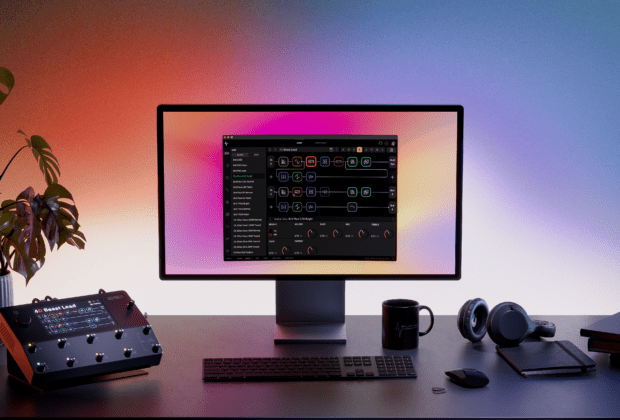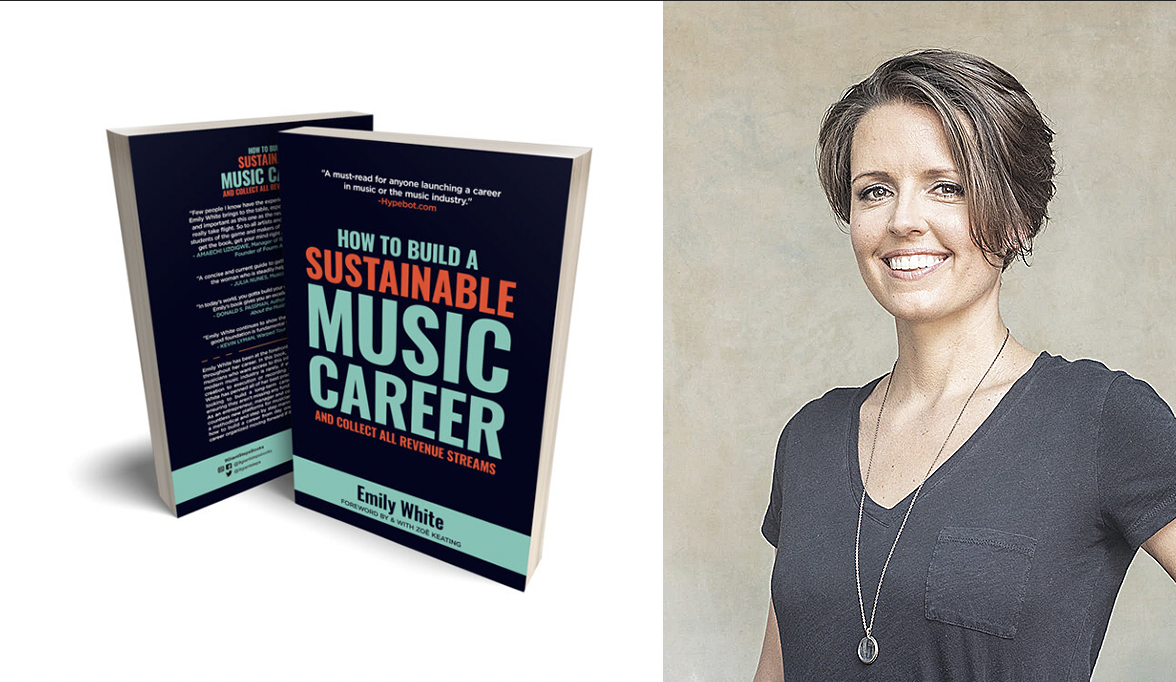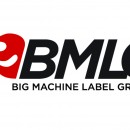Headquartered in Helsinki, Finland, Neural DSP is one of the world’s leading developers of guitar signal processing technology. MC recently had a chance to connect with Douglas Castro and Francisco Cresp, founders of Neural DSP, and was able to get some perspective on the current and future direction of the company.
Music Connection: You recently released Plini X, the first Archetype plugin that’s fully compatible with Quad Cortex, your hardware-based amp modeler. Can you tell me a little about that plugin and why it’s important and how that technology works?
Francisco Cresp: The Archetype Plini X plugin is the first plugin we’ve released that will be fully compatible with Quad Cortex. This means you can load each of the blocks of the plugin as a signal chain into the Quad Cortex. You can also import your user presets and use Cortex Control to manage your signal path.
MC: So, going forward, all that functionality and hardware and software integration is on the boards to be built into the future releases of your Archetype series plugins?
Cresp: We are making progress on making the new platform very robust, and we will be deploying it soon. The new Archetype plugin we recently released for example is called Plini X. The X marks the version of plugins that are now fully compatible with Quad Cortex. We will be releasing updated X versions of older plugins throughout the year quite regularly. That’s the plan at least.
Douglas Castro: Actually, we have been working on this project for quite a while now and a lot of our customers have been asking why it has taken so long. There are several reasons for this. One, is that we have had to implement new communication protocols between the Quad Cortex and services like iLok, for example, so that users will be able to link their Neural DSP account to whichever Neural X series plugins they are using, and then integrate those blocks in Quad Cortex. Technologically, that has been proven to be quite tricky and has taken more time than we would have liked.
The other reason is that a lot of our earlier plugins were made in a way that sounded amazing, but were not in a state that we could port right away into the Quad Cortex. As I said earlier, the more recent plugins have been developed with Quad Cortex in mind from the ground up, but with the earlier plugins, we had to go back and re-engineer some of the amplifier model algorithms and then update them to make them fully compatible with Quad Cortex. As it turned out, it has taken quite a bit of effort to make sure the re-engineered plugins sound perfect and are up to our standards. We have had a lot of people working a long time on this project, but we are making really satisfactory progress and are happy with the results.
Another cool feature is that you can combine a selected effect of one X series amplifier plugin
with another. You can actually mix and match your favorite blocks from different plugins and manage them in the Quad Cortex grid.
These are all very cool features that a lot of our plugin users have asked for. We just have had to figure out how to implement all this as a digital application. Going forward, you will be able to mix and match your favorite blocks from your favorite plugins and create new presets
and control everything from Cortex Control which is going to be really cool, as well.
MC: I know you announced Cortex Control, the desktop graphic user interface application at last year’s NAMM. Is that going to be ready to be deployed as an official release soon?
Castro: The official release of Cortex Control is available for download from the Neural DSP website now.
MC: As I understand it, Cortex Control is going to have some menus to help facilitate integration between the plugins and Quad Cortex?
Castro: Yes, that’s correct. Basically, all of the blocks of a given X series plugin will unlock when the plugin license checks out on iLok and whatever plugin you are using shows up as a registered plugin in your iLok account. Once that’s done, you will then be able to access the blocks from the plugin(s) that you have purchased, and all of the included factory presets as well as your own user presets will show up in Quad Cortex as a Quad Cortex
signal chain and you will be able to control everything with Cortex Control.
MC: What do you feel is important for our readers to know about your company and why as a company do your products stand out among a really crowded field of similar technologies?
Cresp: Our company is a remarkably interesting intersection of highly talented musicians and engineers, technologists, and designers. When we founded Neural DSP, we felt that there was a false economy with other amplifier modelers on the market at that time. On the one hand, there were guitar
signal processing products on the market that were very intuitive and easy to use and user friendly, but they actually weren’t very powerful in terms of signal processing power. On the other hand, there were some amp modelers that sounded good and had a lot of flexibility and signal processing power but were extremely hard to use.
When we set out to design Quad Cortex, we knew we wanted to design a next generation amp modeler and signal processor, a product that would overcome these issues and set the bar going forward for what a next generation amplifier model should be.
Neural DSP is a truly multidisciplinary
company. In my opinion, many companies that we are competing with excel in music but in general have a few strengths and then everything else is sort of neglected or is an afterthought. Like the user interface design for example. Before we released Quad Cortex, no other amp modeler on the market had a touch screen user interface that was anywhere near as easy to use and flexible, it was a real game changer.
When we develop a product, we put all of our design parameters at the forefront, regardless of whether they have been done in other products or not. When we set out to design Quad Cortex, we knew we wanted
to develop a modeler that was not only the most powerful floor unit on the market, but also had the most realistic and best-in-class sounding amplifier as well being the easiest to use and the most compact amp modeler ever created.
With the Quad Cortex, we were going after a lot of superlatives in one unit and to be honest, that was a very big bet because at that time, we were a very small start-up. Today as a company we are quite big, but at the time that the Quad Cortex and the first plugins were developed, our team consisted of just a couple dozen people and it was a huge task to develop our first products the
way we wanted them and get them to market. Fortunately, as it turned out, the bet paid off.
MC: How do you go about vetting the artists you are going to create Archetype series plugins around?
Castro: We try to quantify which artist we are going to work with on several levels. Actually, it’s been harder than you would think it would be to quantify which artists to work with. You would think you would be able to just go by gut instinct and sit around a table and say “oh yes, this is going to be great,” but the reality is the vetting process is a lot more complex. In the early days, making these decisions
was relatively easy, but as we evolved as a company, we have had to take many other factors into consideration before we put our resources behind a given artist as a company.
Today, the artists we select to create an Archetype plugin have to have the right combination of factors going for them. Over the years, a lot of the artists we have considered are highly respected musicians, but they might not have had a following on the internet or social media. The artists we select to work with to develop a plugin need to be respected not only as musicians technically, but they also need to know how to market themselves, not to mention they need to be respected as social media influencers. They also, for lack of a better way to describe it, need to be respected as artists, not just performers.
MC: So, you look for musicians that have a high level of artistry that are genuinely great guitar players and have a track record as social media influencers?
Castro: That’s right. Today, guitar technology has evolved to a point where guitarists have access to a huge range of affordable signal processors. As a result, the bar has been raised really high. I saw this term somewhere online; I don’t know who said it. I wish I did so I could quote them and give them props, but they used the term “Tone Hero” which I think is very much on point to where a lot of guitar players are coming from.
MC: Where do you see your company being five or 10 years from now looking down the road?
Cresp: That’s a particularly good question. We have invested a lot of time and resources in developing very sophisticated technologies that we feel going forward will set the standards for other companies to follow. We are not really interested in following trends. As a company we are not afraid to break the mold and try something new whether it’s an accepted industry standard or not. We were way ahead of the curve in using A.I. to model our algorithms. The result is an extremely robust development platform backed up by a strong group of people that can, going forward, be applied to many different kinds of products in different areas of the music industry, not just guitar products.
I wish we could publish a white paper on how we developed some of our proprietary technologies, because it would be really fascinating to read. It’s a really interesting story. One of the core principles that drives us as a company is how to remove friction from the creative process and try to develop systems to support the technical skillsets of our product development teams. This could, for example, be applied to how we go about modeling amplifier models in this case, but it could also be a different application. That said, I think that staying in the world of guitar is especially important to us and I think that we will continue on that path. Ten years from now, it is crazy to think where technology could lead us. As a company we will always invest a lot of time into research and making sure that we have something really interesting under development.
Find out more at neuraldsp.com













